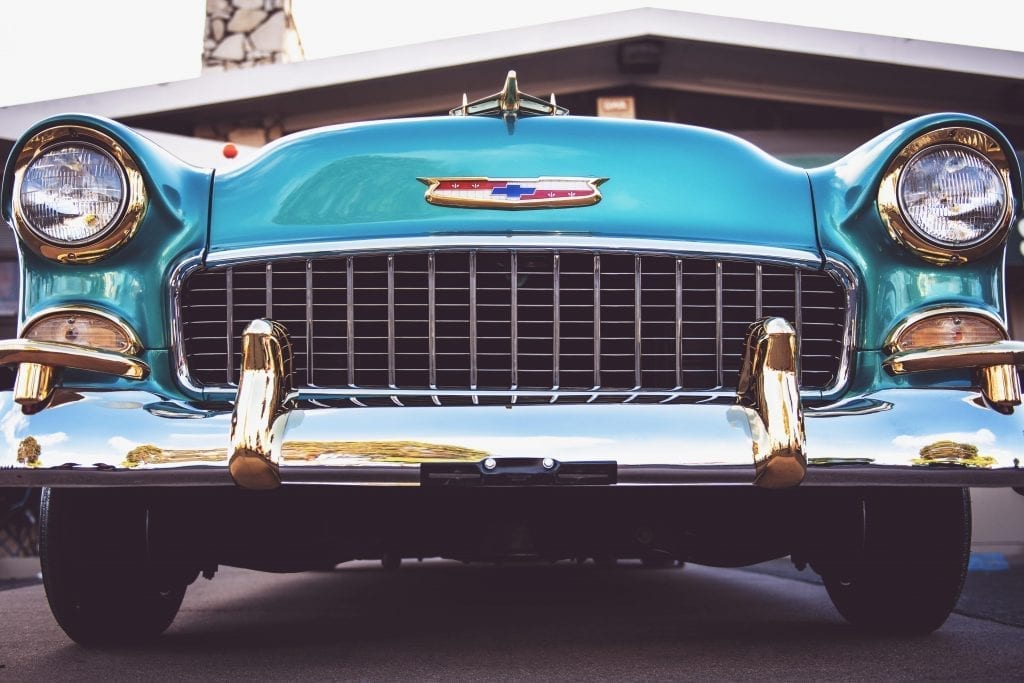
You may be looking for a sports car and are wondering if a Porsche 928 might be right for you. These supercars have won many awards. But what is the real story behind the model? We'll talk about its Performance, Reliability, Design, and Fuel economy. Check out our Porsche 928 review to find out all the details! But before you start shopping around, make sure you read our performance, design, and fuel economy section first.
Performance
The Porsche 928 was an affordable mid-1970s sports car, which cost just over $100,000. The changes were comparatively minor and included a new nose and tail as well as improvements to both the interior and engine. The S and CS versions reached 62 mph respectively in 6.7 and 5.6 seconds. GTS models can reach 170 mph at the top and have a "Competition Package".

Design
The Porsche 911 GTS, a sports car with a 5.4-litre V8 and powerful arches, is the Porsche 911 GTS. It features a new range of exterior colours and equipment, including a trick Blaupunkt stereo. It also features cruise control, heated seats and active air conditioner. Here's how the 928 looks like in a close-up. It's one of the most iconic sports cars ever built.
Fuel economy
The Porsche 928 has a variable fuel economy, depending on its year and model. The table below shows the Porsche 928's real-world MPG and fuel consumption. It is calculated using an average annual mileage (15,000 miles) with 55% being in cities and 45% driving on the highway. All models from the current fuel monitoring program are included. This allows you compare the Porsche 928's fuel efficiency to other vehicles of the same class.
Reliability
The reliability of the Porsche 928 is a very high point, especially when compared to other popular sports cars. The motor of the Porsche 928 is one of its most reliable components, so it is reasonable to expect it will last a long time. The 928 has an automatic gearbox, but it still uses a manual transmission with torque tubes. Although manual transmissions don't have sweet switches, the automatic gearbox works in a similar way to those found on Mercedes-Benz cars.
Cost
The price of a Porsche 928 has been relatively stable for the past decade, but has recently started a gentle upward trend. Prices will vary depending on the year and condition of the Porsche 928. Therefore, it is essential to determine the price range beforehand. If you are looking for a great example, it is possible to purchase one for as high as PS45,000. A 928 in good condition can be purchased for as low as PS15,000 if it requires extensive work. A project can be purchased for as low as PS2500 even if the classic is not in perfect condition.

Reputation
The Porsche 928 is a great grand tourer, which defied Porsche convention at the time. Its performance makes it a serious driving instrument. The 928's high price should not deter buyers. The maintenance of a 928 is very time-consuming. It is best to avoid buying a neglected 928. Instead, look for one that is well-maintained. It will perform well, despite its large size.
FAQ
Is being an auto mechanic a promising career choice?
For those who are passionate about excellence, automotive is a rewarding industry. It is important to work hard and learn as much from others as you can in order to succeed in this industry.
Because you will be spending most of your time communicating with customers and employees, you will need excellent communication skills. You should also be willing to travel and work long hours, making commuting difficult.
If you are interested in a career working in automotive, then consider attending classes at community colleges. Many schools offer programs specific to students interested in sales, auto repair, or customer service.
If you decide to pursue a degree, you should study mechanical engineering. It is possible to earn a bachelor’s degree in only four years.
Many companies will hire students straight out of college. You should start looking for employment as soon as you are able to continue your studies part-time.
After you have completed your education, you will likely need some training to be able to work as an automotive technician.
This means you'll need pass exams like the Automotive Services Excellence (ASE), certification exam. This test covers topics such engine maintenance as brakes, steering, suspension, etc.
Once you pass the ASE test, your license can be applied for by the National Institute for Automotive Service Excellence.
A license permits you to repair private vehicles. In exchange, you'll receive compensation based on the number of services performed.
Not all states require licensing. However, if you plan to work outside your home state, you'll need to obtain a license.
Some states will not issue licenses until an individual has completed certain training. If you are one of these people, you might need to look for another alternative.
How can I prepare to become a mechanic apprentice?
It is important that you understand the ramifications of your actions. You need to understand the mechanics of cars and how they work. This will make it easy to find the right place to start your first day in the garage.
You should also know how to fix common problems such as tires or broken lights.
You will be able to diagnose and repair problems yourself.
It is also important to know how the different pieces fit together in order to put them together again.
Finally, you need to be able to safely and efficiently use tools.
These things will enable you to be a competent mechanic.
How long is an apprenticeship for an automotive mechanic?
A three-year apprenticeship in automotive mechanics takes. The apprenticeship includes two years studying at school and two more as an apprentice. The first year is spent learning all aspects of the trade, including theory, practical skills, and safety procedures. You'll also learn the safe and efficient use of tools during this first year. After the completion of the first year, you will spend another year on the job training. Here you'll gain valuable experience in different trades. These are also the times you can attend formal courses.
The final year of the program is spent gaining qualifications and becoming certified in the field. These include NVQs. They are awarded after passing exams on specific topics within the industry. You can also get HNCs (Higher National Certificates), that cover subjects such as customer service, business administration, management, and business administration. For those interested in pursuing certain trades, City & Guilds certificates are available.
What length of an automotive course is it?
A course in automotive lasts three years.
The first year of your training is devoted to theory. You will learn all about cars. The second year will be spent in practical training. Here you will learn how fix engines, drive and other mechanic jobs. The final year includes a placement at an auto shop. This gives you real-world experience fixing real problems.
Can I work as an auto mechanic without a degree? What about part-time study?
While a degree is not required, it does help. Employers prefer candidates who have completed a full degree. It shows that you've worked hard and are determined to succeed.
You can still study while working, however. Some universities allow students to complete coursework over the summer holidays and finish their studies later in the year. Some universities allow students to take part-time classes throughout the year.
What is the difference in a mechanic and an auto technician?
Although they may be similar, they are not identical. Both a mechanic and an automotive technician can repair cars.
A mechanic should be able to do simple tasks quickly and have good manual dexterity. A mechanic must be able diagnose and fix problems quickly and accurately.
A technician in automotive is more technical than a mechanic. They should be able read blueprints and use tools like drills and wrenches.
They should be able safely to perform complex procedures. They must be familiar with all types of electrical and engine systems.
They must also understand the interplay of different parts.
As a result, a mechanic usually earns less money than an automotive technician. There are many job opportunities in both.
What are the basics of car mechanics?
For an auto mechanic job, you don’t have to be an expert in cars. It's enough to know how to fix things. Most people begin by changing brake pads and tires, before moving on to more complicated repairs.
You'll need the ability to read and understand diagrams and to follow simple rules of good practise. Also, you will need to know how to tell if parts require replacing or repair.
It is important that you have proper training and guidance before you attempt to repair vehicles. This is especially true for expensive components, such as transmissions and engines.
Even though you don't need to be an expert on cars, it is important to understand the fundamentals of mechanical engineering and physical physics. This involves understanding how engines work and how brakes work.
You should also be ready to handle all kinds of situations. You might be required to work on a vehicle that was involved in an accident. Additionally, you will need to have experience with handling accidents and breakdowns.
You must also be willing to learn quickly. As well as being able to diagnose problems, you'll need to be able to perform simple maintenance tasks such as tightening nuts and bolts.
Statistics
- The U.S. Bureau of Labor Statistics (BLS) reports that the job outlook for automotive service technicians and mechanics is expected to decline by 4% from 2019 to 2029. (indeed.com)
- According to the BLS, total auto technician employment is expected to exceed 705,000 by 2030. (uti.edu)
- Apprentice mechanics earn significantly less hourly than mechanics who have completed training, with a median wage of approximately $14.50 an hour, according to PayScale. (jobhero.com)
External Links
How To
How to properly diagnose your vehicle for repair
To determine if your car needs repairs, you should first look at the symptoms that your car presents. These steps will help you diagnose your car properly.
-
Check engine lights. Make sure to check all dashboard indicators like the engine light indicator (oil pressure gauge), the battery indicator (battery light indicator), and the RPM indicator (rpm gauge). If any of these indicators have been flashing continuously for several days it could mean that there is something wrong with your vehicle.
-
Examine the treads of the tires. Tires can become worn and cause problems in handling and braking. The treads of the wheels should be inspected as well. They should be smooth and clean. The best way to do this is to remove the wheels and take them off. A flashlight can be used to check how worn the treads are.
-
Observe the brake fluid level. You must always monitor the level of your brake fluid. This will ensure your brakes function properly. Low brake fluid levels can cause brake failure when you apply pressure.
-
Test the suspension system. Vehicles usually have a suspension system that helps absorb shocks and vibrations while driving. It gives you better control and allows for smoother accelerations and decelerations. It might feel uncontrollable or wobbly if your vehicle is suffering from a suspension problem. Try putting some weight on your front or rear axle to determine if you have a suspension problem.
-
Examine your steering column. The steering columns are what connect the steering knob to the rest. Many accidents can cause damage to steering columns. If yours feels loose or shaky, you should replace it.
-
Pay close attention to the exhaust tube. Exhaust pipes move gases from combustion chamber to atmosphere. Exhaust pipes that are cracked or leaking can allow harmful fumes to enter your cabin. It is also important to repair any bends in your tailpipe immediately.
-
Look under your hood. Check under your hood for any unusual or missing components. You could have fluids leaking from the engine. A professional technician should be contacted if your engine compartment emits an unusual smell.
-
It is important to inspect the air filter. The outside environment collects dust and other particles in the vehicle's filter. A dirty filter can lead to a poor vehicle's performance. Replace your air filter regularly.
-
The fan belt should be checked. The fan belt that connects your vehicle to the transmission is called the engine fan belt. If it breaks, the engine won't turn over. It is very easy to replace your belt. All you need are a screwdriver & pliers.
-
The radiator hose and hoses should be checked. The radiator hose carries water from the radiator to the engine. If it becomes cracked or damaged, it can leak hot liquid onto the engine. Repairing the hose is easy with a pair of needlenose pliers or a small wire brush.
-
Make sure you have the windshield wipers checked. Windshield wipers use electricity to remove snow and rain. If they stop functioning, they can leave streaks in your window glass. Simply change the washer oil to fix the problem.
-
Make sure you check the cables. The battery cables provide power for the electrical systems in your car. When you replace batteries, make sure to disconnect the negative cable first. Failure to do so can damage your alternator.
-
Check the headlights. Headlights are used to illuminate the road ahead. They can make it difficult to see if they stop working. Check the bulbs to see if they've burned out.
-
Check the lights. When you approach them at night, the lights warn other drivers. You could be distracted and cause an accident if one does not work.
-
Inspect your brakes. Before you have a collision, brakes slow down your car. You could lose control of the car and cause a crash if they don't work properly.
-
Change the oil. The oil keeps your engine well lubricated. It prevents metal parts from rusting too quickly. It is recommended that you change your oil at least once per month.